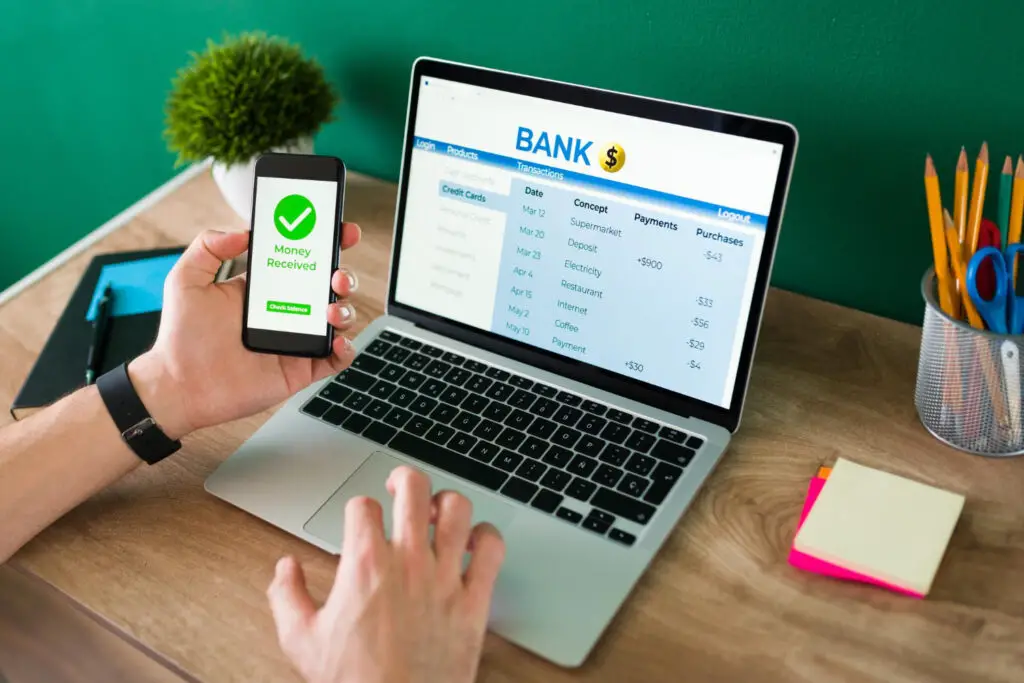7 Game-Changing Reasons to Leave Your Traditional Bank for Digital Banking

Have you ever looked at your bank statement and thought, “Wait—why am I being charged just to hold my own money?” If so, you’re not alone. From surprise fees to outdated apps and limited branch hours, traditional banks often feel more like a necessary evil than a helpful financial partner. Meanwhile, digital banks are quietly revolutionizing the way Americans manage their money—faster, smarter, and with way fewer headaches.
Whether you’re fed up with clunky mobile apps or tired of paying for the “privilege” of accessing your cash, it might be time to rethink your relationship with your old-school bank. Digital banking isn’t just a trend—it’s a better way to bank. And if you’ve been hesitant to make the leap, now’s the perfect time to take a closer look.
Here are 7 game-changing reasons why more people are ditching their traditional banks and embracing the ease and efficiency of digital banking.
1. Say Goodbye to Annoying Fees

Let’s be real: nothing kills your financial vibe faster than hidden bank fees. Traditional banks are notorious for sneaky charges—monthly maintenance fees, overdraft penalties, ATM fees, and more. It’s like death by a thousand cuts for your wallet.
Digital banks, however, are rewriting the script. Many offer no monthly maintenance fees, no minimum balance requirements, and fewer overdraft charges. Some even reimburse you for using out-of-network ATMs. That’s money staying in your pocket where it belongs. Imagine how much you could save over a year without your bank silently nibbling away at your balance!
2. Earn More with Higher Interest Rates

Traditional banks typically offer interest rates so low, you’d need a microscope to see your savings grow. Seriously—earning 0.01% on your savings feels like an insult. Digital banks, on the other hand, frequently offer high-yield savings accounts with APYs that can be 10-20 times higher than those offered by brick-and-mortar banks.
Why the difference? Digital banks don’t carry the cost of physical branches, so they pass those savings to customers in the form of better rates. Whether you’re building an emergency fund or saving for your dream vacation, switching to a digital bank means your money can finally start working as hard as you do.
3. Bank Anywhere, Anytime

Remember when you had to rush to the bank before it closed at 5 PM? Or wait in line on your lunch break just to deposit a check? Those days are history thanks to digital banking.
With a digital bank, your bank is open 24/7 right in your pocket. Need to transfer funds while standing in the grocery store line? Done. Want to freeze your debit card because it mysteriously vanished between your couch cushions? Easy. Digital banking gives you total control over your finances no matter where you are or what time it is. For people with busy lives—or anyone who simply values convenience—this alone is a game-changer.
4. Next-Level Mobile Apps

Ever try using a traditional bank’s app and feel like you’re stuck in 2012? Clunky interfaces, glitchy screens, and a labyrinth of menus that lead nowhere. Digital banks, however, put serious effort into sleek, user-friendly mobile apps that make managing your money almost enjoyable.
We’re talking instant spending notifications, budgeting tools, savings goals, and clear visuals that help you track your money in real time. Some apps even offer clever features like roundup savings, where your purchases are rounded up to the nearest dollar and the difference is deposited into your savings. It’s financial management for the digital age—and it might even make you excited to check your bank account.
5. Speedy Transfers and Payments

Traditional banks can take forever to process transactions. Transferring money between accounts or to someone else? That could be a couple of business days—because apparently, money travels by horse and carriage.
Digital banks, on the other hand, are all about speed. Many offer instant transfers, same-day ACH payments, and quick peer-to-peer payments through integrations with services like Zelle or Venmo. Some even provide early access to your paycheck, letting you get paid up to two days sooner than with a traditional bank. Fast money movement is essential in today’s world, and digital banks deliver.
6. Top-Notch Security You Can Trust

One of the biggest misconceptions about digital banking is that it’s somehow less secure because it’s online-only. In truth, digital banks often offer stronger security measures than many traditional banks.
Think advanced encryption, biometric logins like Face ID or fingerprint scanning, real-time fraud alerts, and the ability to instantly lock your card if something goes wrong. Plus, reputable digital banks are FDIC-insured up to $250,000 per depositor, just like traditional banks. Some even provide virtual cards for safer online shopping. So while cyber threats exist everywhere, digital banks are investing heavily to keep your money—and your personal data—safe and sound.
7. Modern Features Designed for Real Life

Traditional banks sometimes feel stuck in the past. Digital banks, however, are constantly innovating with features tailored to modern financial needs. Want to split a dinner bill with friends? Need budgeting insights to curb your takeout habit? Digital banks have you covered.
Many offer tools like automatic savings, real-time spending insights, custom alerts, and even cash-back rewards on debit purchases. Some let you create separate “buckets” for savings goals, helping you visually track progress toward things like a new car or holiday gifts. These features aren’t just cool—they’re genuinely helpful for building healthier money habits. Digital banks are evolving alongside how people actually live, making your banking experience smoother, smarter, and surprisingly enjoyable.
Final Thoughts

Look, we’re not saying traditional banks are completely obsolete (yet). But when you compare the fees, the sluggish technology, and the outdated ways of doing business, it’s hard to ignore how much better digital banking can be for everyday Americans.
With lower fees, higher interest rates, lightning-fast service, and modern tools to help you manage your money, switching to a digital bank can make your financial life simpler—and maybe even a little fun. Plus, most digital banks make it easy to test the waters with no minimum balance requirements. You can open an account, see how you like the experience, and keep your traditional bank account as a backup until you’re ready to commit fully.
If you’re craving a more modern, efficient, and rewarding way to handle your finances, it might be time to break up with your old bank. Digital banking is the future—and it’s already here.
Leave a Reply